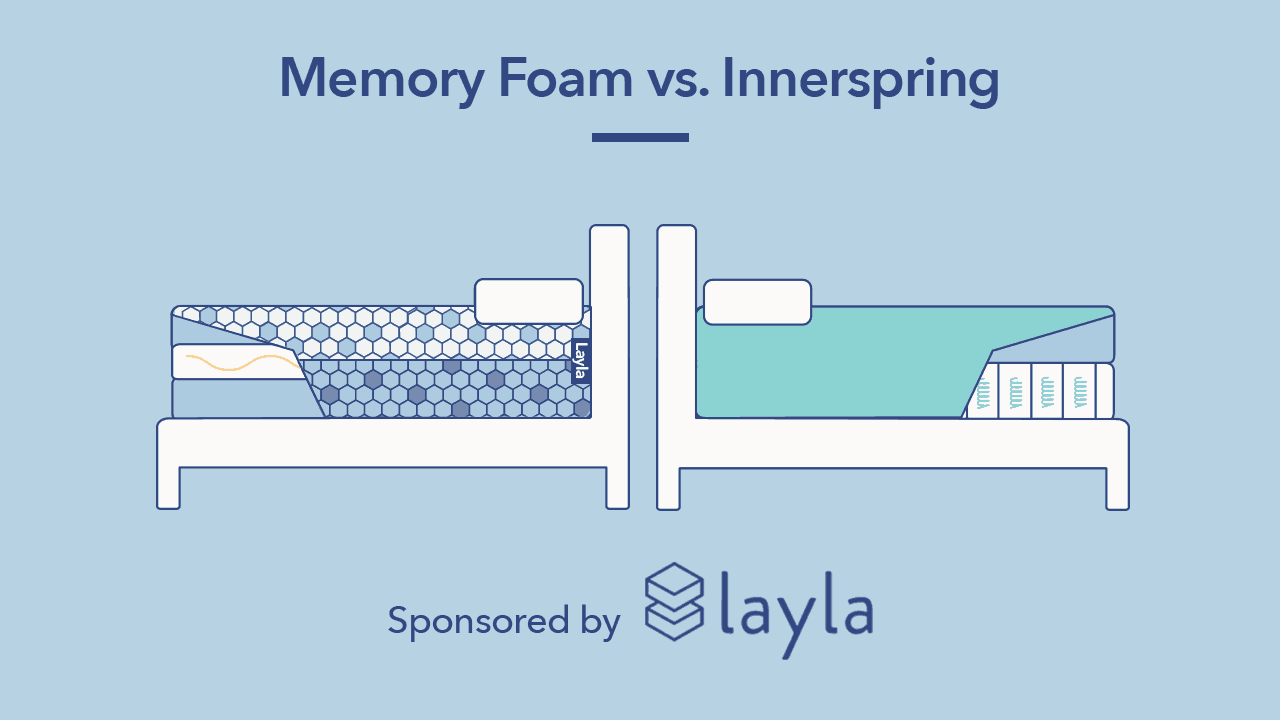When it comes to choosing the perfect mattress for a good night’s sleep, two popular options that often come to mind are the innerspring and memory foam mattresses. While both offer their own unique benefits and features, understanding the differences between them is crucial in making an informed decision. In this article, we will explore the distinctions between innerspring and memory foam mattresses to help you find the perfect match for your sleep preferences.
Innerspring Mattresses
Innerspring mattresses are a traditional choice that has been around for decades. They are constructed with a system of metal coils or springs that provide support and bounce. Typically, the more coils a mattress has, the better its support and durability. Innerspring mattresses come in various spring types, including Bonnell, offset, pocketed, and continuous coils, each having its own level of comfort and responsiveness.
One of the major advantages of innerspring mattresses is their breathability. The space between the coils allows for good airflow, helping to regulate body temperature and keep you cool while you sleep. This makes innerspring mattresses an excellent choice for those who tend to sleep hot or live in warmer climates.
On the downside, innerspring mattresses may not provide sufficient motion isolation. These mattresses tend to transfer movement, which means that if you have a restless partner or a pet sharing your bed, you may experience some disruptions throughout the night. Additionally, innerspring mattresses may not contour as well to your body, resulting in less pressure relief for your joints.
Memory Foam Mattresses
Memory foam mattresses have gained immense popularity in recent years due to their exceptional ability to conform to the body’s shape. They are made from a heat-sensitive material that responds to your body’s heat and weight, contouring to your curves and providing personalized support. Memory foam mattresses distribute weight evenly, alleviating pressure points and reducing the likelihood of waking up with aches and pains.
One of the significant advantages of memory foam mattresses is their excellent motion isolation. The foam absorbs and minimizes movement, making them an ideal choice for couples or anyone who shares a bed. You can sleep soundly without being disturbed by your partner’s tossing and turning.
Another benefit of memory foam mattresses is their ability to relieve pain and discomfort. The contouring and supportive properties of memory foam can help alleviate back, neck, and joint pain. Individuals with chronic pain conditions may find relief when sleeping on a quality memory foam mattress.
However, memory foam mattresses have some potential downsides to consider. They can retain heat due to their dense composition, causing some sleepers to feel uncomfortably warm during the night. To combat this issue, many memory foam mattress manufacturers now use cooling technologies to ensure a cooler sleep surface. Additionally, some people may find memory foam mattresses to be too soft or lack the “bounce” provided by innerspring mattresses.

Credit: sleepopolis.com

Credit: www.sleepjunkie.com
Frequently Asked Questions Of What Are The Differences Between Innerspring And Memory Foam Mattresses
What Is An Innerspring Mattress?
An innerspring mattress is a traditional mattress that uses metal coils or springs as its primary support system.
How Does An Innerspring Mattress Feel?
An innerspring mattress provides a firm and responsive feel with strong support due to the metal coils or springs.
What Are The Benefits Of An Innerspring Mattress?
An innerspring mattress offers excellent breathability, cooling properties, and exceptional edge support, making it an ideal choice for hot sleepers.
What Is A Memory Foam Mattress?
A memory foam mattress is made from a high-density foam that contours to the shape of your body, providing pressure relief and personalized support.
Conclusion
Choosing between an innerspring and memory foam mattress ultimately comes down to personal preference. Innerspring mattresses offer good breathability and a more traditional feel, while memory foam mattresses provide exceptional support, pressure relief, and motion isolation. Consider your sleep preferences, body type, and any specific needs you may have before making a decision. Don’t hesitate to test out mattresses in-store or read customer reviews to get a better idea of which mattress type suits you best. Remember, investing in a high-quality mattress is crucial for your overall well-being and quality of sleep.
Leave a Reply